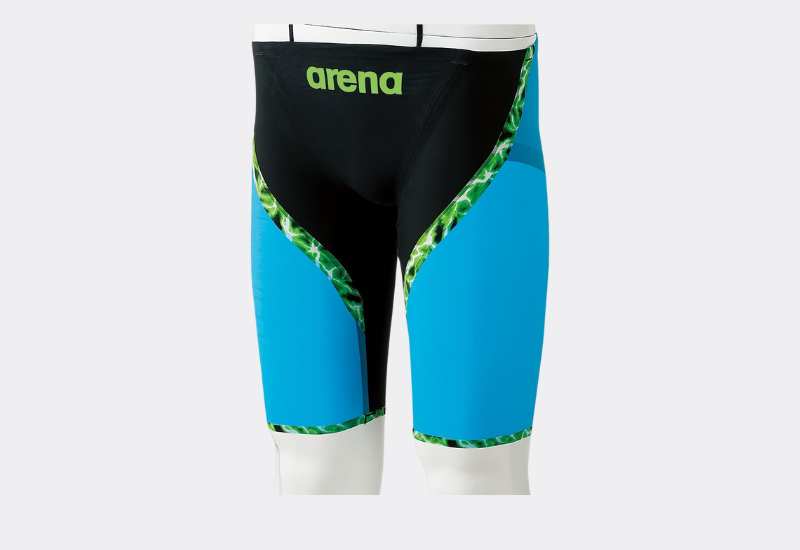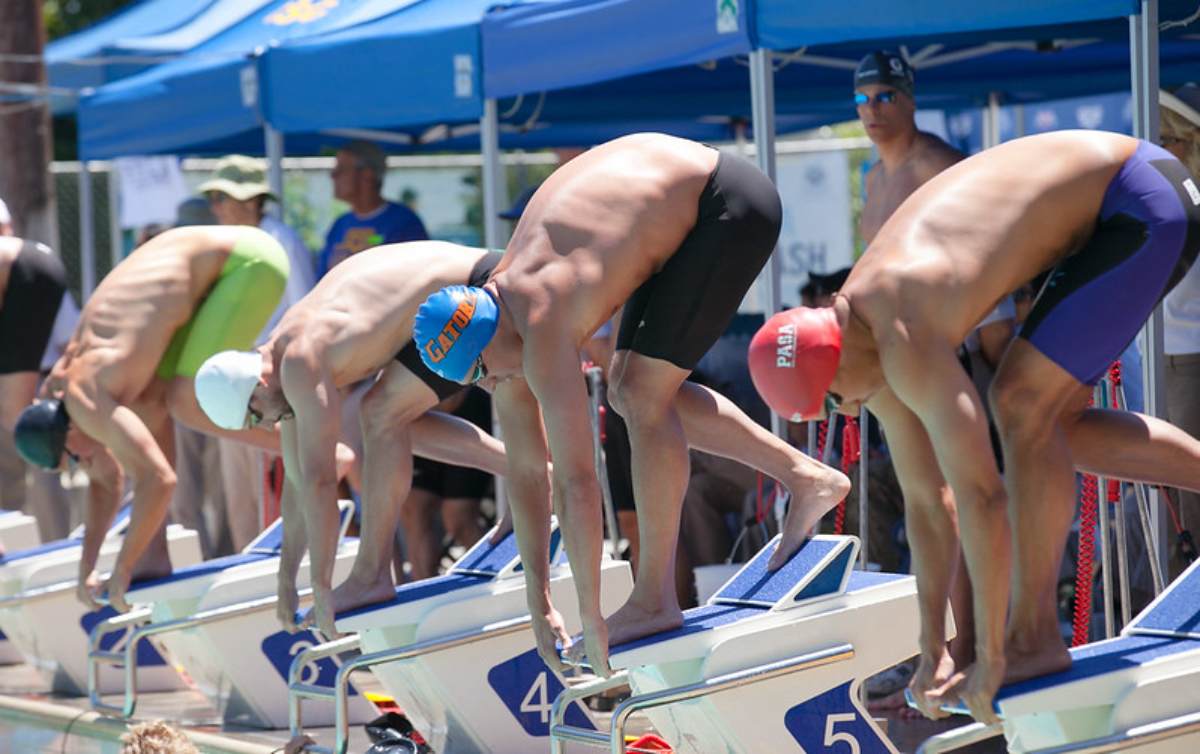Curious how wearing a racing jammer affects swim performance? Here’s how a men’s tech suit compares against your standard training swimsuit.
You’ve worked hard all season, eaten like a pro, focused on sleeping well for recovery, and the taper went just right.
And now, it’s time to shave down, eat that final pre-race meal, and squish your body into a high-performance tech suit.
Racing swimsuits—tech suits—are a very specialized type of competition swimwear that helps swimmers to reduce drag, improve body position, and generally swim faster.
But how do tech suits help us swim faster? And how do they differ compared to a regular ole training swimsuit when sprinting?
In this article, with the help of a study with twelve swimmers in Japan, we look at some of the performance benefits of a racing jammer versus a standard polyester training suit.
Let’s dive in.
Racing Jammer vs Polyester Training Suit
The study by Moriyama et al. (2021), published in Sports Biomechanics, compared swim speed and kinematics in a group of collegiate male swimmers (~500 FINA points, so not quite elite, but experienced competitive swimmers).
Swimmers did 25s fast of freestyle swim and pull, with both a racing jammer made by Arena (66% nylon, 34% spandex) and a traditional square-cut 100% polyester training suit.

Perhaps unsurprisingly, the racing jammer outperformed the training suit in small but meaningful ways:
- Velocity increased – When using the jammer, speeds increased when doing pull (1.3%) and swimming (1.7%).
- Stroke length increased – Swimmers got more distance per stroke with each arm cycle. This was especially the case when doing pull (3.1%) compared to swim (1.1%). Swimmers used a more efficient glide when rocking the tech suit.
Other parameters remained relatively steady between the two conditions.
- Stroke rate was basically the same between swimsuits
- Drag was almost the same (slight improvement but not enough to be significant)
- Trunk muscle activity didn’t increase with the racing suit
Swimsuit brands often tout that their tech suits improve trunk stability and intra-abdominal pressure, but this study didn’t find any increases in muscle activity in the core.
Improved swimming speed came mainly from longer, more efficient strokes. This likely happened because the racing swimsuit squeezed the legs and hips, shaping the body to slip through the water more easily and with less resistance (Papic et al., 2020).
This makes a compelling argument for “suiting up” more regularly in training in order to help adapt to the feel and mechanics of a more efficient stroke when rocking out a tech suit.
The Bottom Line
Tech suits are often touted as the silver bullet for increased performance on race day. (I know I certainly prayed to the racing fabric gods on more than one occasion for some unearned gainz before Big Meets.)
And while there are some small performance improvements you can expect to see, it’s worth knowing how these slight edges in speed and efficiency happen. In this particular study, racing swimwear helped swimmers move more efficiently across the pool, covering more pool with each stroke cycle.
Understanding this mechanism can help you to prepare for competition appropriately. Whether that means adjusting your number of strokes into the wall or simply suiting up more often in training.
Happy (fast) swimming!













